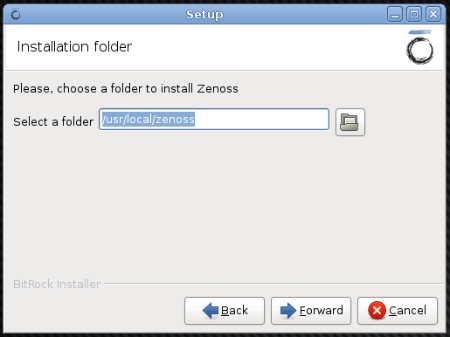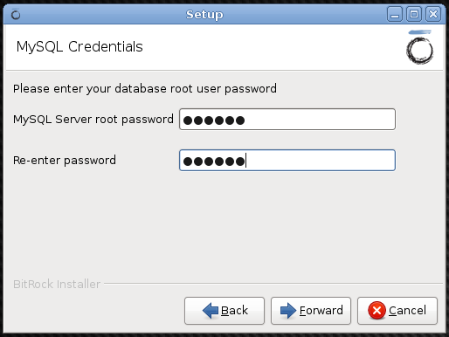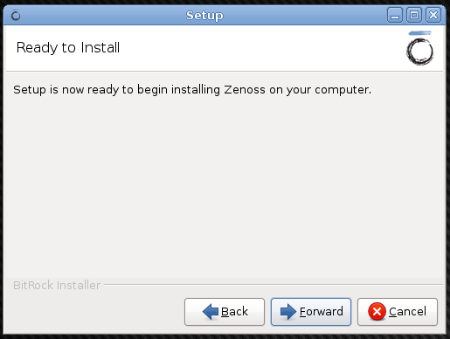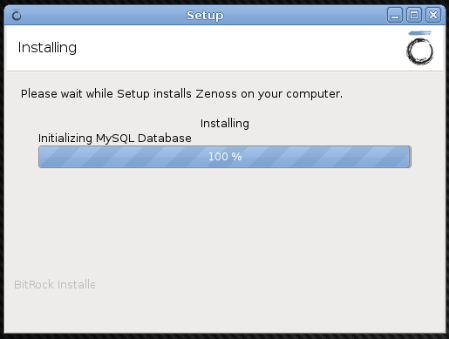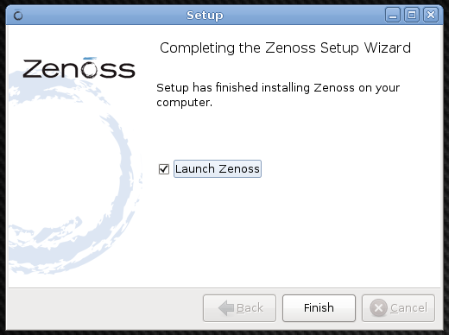#1. Install Zenoss for SUSE Linux Enterprise Server
Follow these instructions to install Zenoss and the Zenoss stack for SUSE Linux Enterprise Server (SLES).
#1.1. Download the Installer
If installing Zenoss Core, download the Zenoss installation files from this location:
Download the Zenoss Enterprise installation files from the suse/ directory at the Zenoss download site:
http://support.zenoss.com/download
Note
Contact your Zenoss representative for site login credentials.
#1.2. Launch the Installer
Choose one of the following methods to launch the installer, depending on your preference or environment:
Command line
KDE
Gnome
#1.2.1. Command Line
Follow these steps to open the installer from the command line.
Note
zenoss*.bin is the current installation file.
Open a command line prompt, and then change to the directory where you downloaded the installer:
$ cd <YourDownloadDirectory>/
Make the installer executable. Use this command:
$ chmod +x zenoss*.bin
Run the Zenoss installer. Zenoss requires that you perform this installation as the root user.
If you know your root password, then use the su command:
$ su root -c ./zenoss*.bin
If you do not know your root password, then use the sudo command:
$ sudo ./zenoss*.bin
#1.2.2. KDE
Follow these steps to open the installer in KDE:
Make the file executable:
Right-click the downloaded file, and then select Properties from the actions menu.
Click the Permissions tab.
Select the "Is executable" option.
Click OK.
Run the program as root. Right-click the file, and then select the Open With menu item.
Enter this command to open the Zenoss installer:
kdesu
#1.2.3. Gnome
Follow these steps to open the installer in Gnome:
Make the file executable:
Right-click the downloaded file, and then select Properties from the actions menu.
Click the Permissions tab.
Select the "Allow executing file as program" option.
Click OK.
Run the program as root. Right-click the file, and then select the Open with Other Application menu item.
Select Use a custom command, then enter this command to open the Zenoss installer:
gksu
#1.3. Install Zenoss
The installer prompts for this basic configuration information at startup:
Installation location (the default location is
/usr/local/zenoss)Root password for MySQL
If you run the installer from a desktop, it provides graphical dialog prompts. If the installer is run from a headless or remote location, is uses simple, command-line prompts.
After launching the installer, the initial Zenoss installer screen appears.
Click Forward.
Choose the installation location for Zenoss.
The MySQL Credentials screen appears and prompts you for MySQL password information.
The root password for MySQL is for a fresh installation of MySQL dedicated exclusively to Zenoss. It is not the root password for the computer, or the root password to any existing MySQL installation. You can use any non-empty password; this password is not stored by the Zenoss installer.
Click Forward.
You are now ready to Install Zenoss.
Click Forward to start the install process.
This point in the installation process may take several minutes without showing any change. Note that there is a long pause (up to several minutes) near the end of the installation as Zenoss initializes.
When installation is complete, the following dialog appears.
If you select "Launch Zenoss" the installer will attempt to run your Web browser and point it to Zenoss. If this fails (usually because your browser is already running), then direct your browser to this location:
If port 8080 is already in use, the installer prompts for a new port on installation. For example, if you installed on your local computer, and selected port 8888 as the new port for the Zope server, then use the following location:
Click Finish. The Zenoss setup wizard appears.
#1.4. What's Next?
After installing Zenoss, go to the section titled "Quick Start" in the guide titled Getting Started with Zenoss. There you will find instructions for initial setup tasks and basic information to help you begin using Zenoss.
Download the Getting Started guide (in Portable Document Format) from the Documentation area of the Zenoss Web site:


